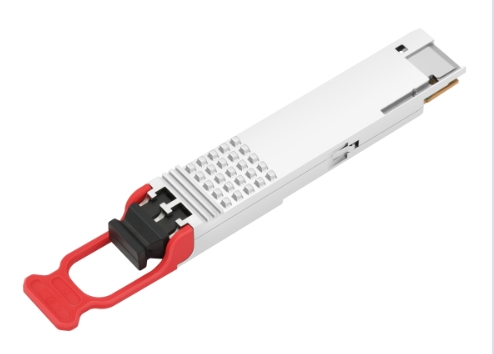In the rapidly evolving landscape of high-speed data transmission, the choice between QSFP28 and QSFP28-DD optical modules for 200G 80KM applications can significantly impact network performance and infrastructure costs. This article delves deep into the key differences between these two modules, providing you with the insights needed to make an informed decision for your network setup.
 200GBase-QSFP-DD ZR4 80KM 80km (SMF, 1310nm,LC)
200GBase-QSFP-DD ZR4 80KM 80km (SMF, 1310nm,LC)
The first noticeable difference lies in the physical structure of QSFP28 and QSFP28-DD. QSFP28, short for Quad Small Form-factor Pluggable 28, is a standard form factor widely adopted in data centers and telecommunications networks. It has a compact design that allows for high-density port deployment, fitting seamlessly into existing 1U and 2U switch chassis.
On the other hand, QSFP28-DD (Double Density) is an enhanced version with a similar footprint but a different pin layout. The “DD” in its name indicates its double-density capabilities. While it occupies the same space as a QSFP28 module, QSFP28-DD offers twice the data lanes, enabling higher data rates within the same physical space. This makes it a more space-efficient option when upgrading to higher-speed connectivity without altering the existing switch architecture too extensively.
When it comes to 200G 80KM optical modules, both QSFP28 and QSFP28-DD are designed to support this data rate over long distances. However, the way they achieve this varies. QSFP28 modules typically use four lanes, each operating at 28 Gbps, aggregating to a total of 100 Gbps or 200 Gbps with the use of PAM4 (Pulse Amplitude Modulation 4-level) signaling.
QSFP28-DD, with its double-density design, features eight data lanes. Each lane can also operate at 28 Gbps, and when combined, it can effortlessly reach the 200 Gbps mark. In some cases, with advancements in technology, QSFP28-DD modules can even support higher data rates, making them more future-proof compared to traditional QSFP28 modules for long-term 200G 80KM deployments.
Power consumption is a crucial factor, especially in large-scale data center deployments where hundreds or even thousands of optical modules are in use. Generally, QSFP28 modules consume less power due to their simpler design and fewer data lanes. This lower power draw contributes to reduced operational costs, lower heat generation, and less strain on cooling systems within the data center.
QSFP28-DD, on the other hand, with its additional data lanes and enhanced capabilities, consumes more power. The increased power consumption is a trade-off for the higher data density and performance it offers. When planning a network setup, it’s essential to consider the power infrastructure and cooling capacity to accommodate the higher power requirements of QSFP28-DD modules, especially in environments where power efficiency is a top priority.
Compatibility with existing network equipment is another aspect to consider. QSFP28 is a well-established standard, and as such, it enjoys broad compatibility with a wide range of switches, routers, and servers from various manufacturers. This makes it a reliable choice for network upgrades or expansions where maintaining interoperability with legacy equipment is necessary.
QSFP28-DD, although relatively new, is quickly gaining traction and is designed to be backward-compatible with some QSFP28 ports. However, it’s important to check the specifications of your existing equipment carefully before integrating QSFP28-DD modules. Some older devices may not support the additional lanes or the specific signaling requirements of QSFP28-DD, which could lead to compatibility issues.
Cost is often a determining factor in any purchasing decision. Initially, QSFP28 modules tend to be more cost-effective, especially for smaller-scale deployments or when budget constraints are tight. Their widespread adoption and mature manufacturing processes contribute to lower production costs, which are reflected in the market price.
QSFP28-DD modules, due to their advanced technology and higher performance capabilities, come with a higher price tag. However, when considering the long-term benefits, such as increased data density and potential for future upgrades, the investment in QSFP28-DD might be worthwhile for larger data centers or organizations with growing bandwidth requirements.
Headquarter address :Room 1603, Coolpad Building B, North District of Science and Technology Park, Nanshan District, Shenzhen,China.518057